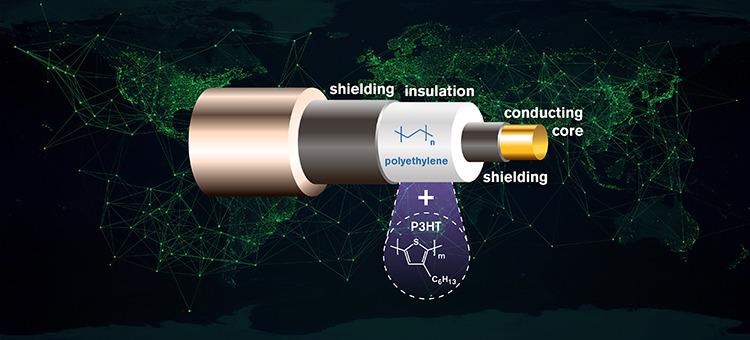Reviewed by Alex SmithAug 27 2021
High-voltage direct current cables with the potential to effectively transport electricity over long distances are crucial to electricity supply. Hence, improving their performance is a significant challenge.
 Researchers at Chalmers have developed a new isolations material up to three times less conductive, offering significant improvements to the properties and performance of high voltage direct current cables. Efficient and safe high voltage current cables are important for safe and reliable renewable energy distribution. Image Credit: Yen Strandqvist/Chalmers.
Researchers at Chalmers have developed a new isolations material up to three times less conductive, offering significant improvements to the properties and performance of high voltage direct current cables. Efficient and safe high voltage current cables are important for safe and reliable renewable energy distribution. Image Credit: Yen Strandqvist/Chalmers.
Researchers from the Chalmers University of Technology had this goal in mind and developed a new insulation material that is less conductive up to three times. This provides considerable enhancements to the properties and performance of such cables.
If people have to shift to a world that is powered by renewable energy, efficient long-distance transmission of electricity is necessary. This is because the supply—renewable energy sources like wind and solar farms, as well as hydroelectric dams—is often situated far away from cities, where the majority of the demand prevails. High-voltage direct current (HDVC) cables are considered to be the most effective means of transporting electricity over long distances.
Insulated HVDC cables can be laid on the seabed or buried underground, enabling a significant expansion of networks. Several projects are now in progress to connect various parts of the globe.
In Europe, for example, the NordLink project will connect southern Norway and Germany, and HVDC cable projects form a major part of the energiewende, Germany’s comprehensive plan to move to a highly environmentally sustainable energy supply.
For us to handle the rapidly increasing global demand for electricity, efficient and safe HVDC cables are an essential component. The supply of renewable energy can fluctuate, so being able to transport electricity through long distance networks is a necessity for ensuring a steady and reliable distribution.
Christian Müller, Study Lead and Professor, Department of Chemistry and Chemical Engineering, Chalmers University of Technology
Some amount of energy should be lost during transport. One way to decrease such a transmission loss is to increase the direct current voltage level.
However, an increase in the transmission voltage adversely affects the insulation of an HVDC cable.
Xiangdong Xu, Research Specialist, Department of Electrical Engineering, Chalmers University of Technology
Currently, scientists present a novel approach to decrease the conductivity of insulation material.
A Material that Gives the Cables Three Times Lower Conductivity
Polyethylene is used as the basis of the new material, which is being used for insulation in present HVDC cables. Through the addition of very small amounts—5 ppm—of the conjugated polymer called poly (3-hexylthiophene), the scientists have now reduced the electrical conductivity by up to three times.
Also called P3HT, the additive is an extensively studied material, and provided the small amounts needed, it paves the way for new prospects for manufacturers. The other potential substances that have earlier been utilized to decrease the conductivity are nanoparticles of different metal oxides and other polyolefins, but these need considerably greater amounts.
In materials science, we strive to use additives in as small quantities as possible, in order to increase the potential for them to be used in industry and for better recycling potential. The fact that only a very small amount of this additive is required to achieve the effect is a big advantage.
Christian Müller, Study Lead and Professor, Department of Chemistry and Chemical Engineering, Chalmers University of Technology
A Discovery that Could Lead to a New Research Field
In the past, conjugated polymers like P3HT have been utilized to develop flexible and printed electronics. But this is the very first time they have been utilized and investigated as an additive to alter the properties of a commodity plastic. Hence, the scientists believe that their breakthrough could result in various new applications and directions for study.
“Our hope is that this study can really open up a new field of research, inspiring other researchers to look into designing and optimizing plastics with advanced electrical properties for energy transport and storage applications,” stated Christian Müller.
Journal Reference:
Pourrahimi, A. M., et al. (2021) Repurposing Poly(3-hexylthiophene) as a Conductivity-Reducing Additive for Polyethylene-Based High-Voltage Insulation. Advanced Materials. doi.org/10.1002/adma.202100714.